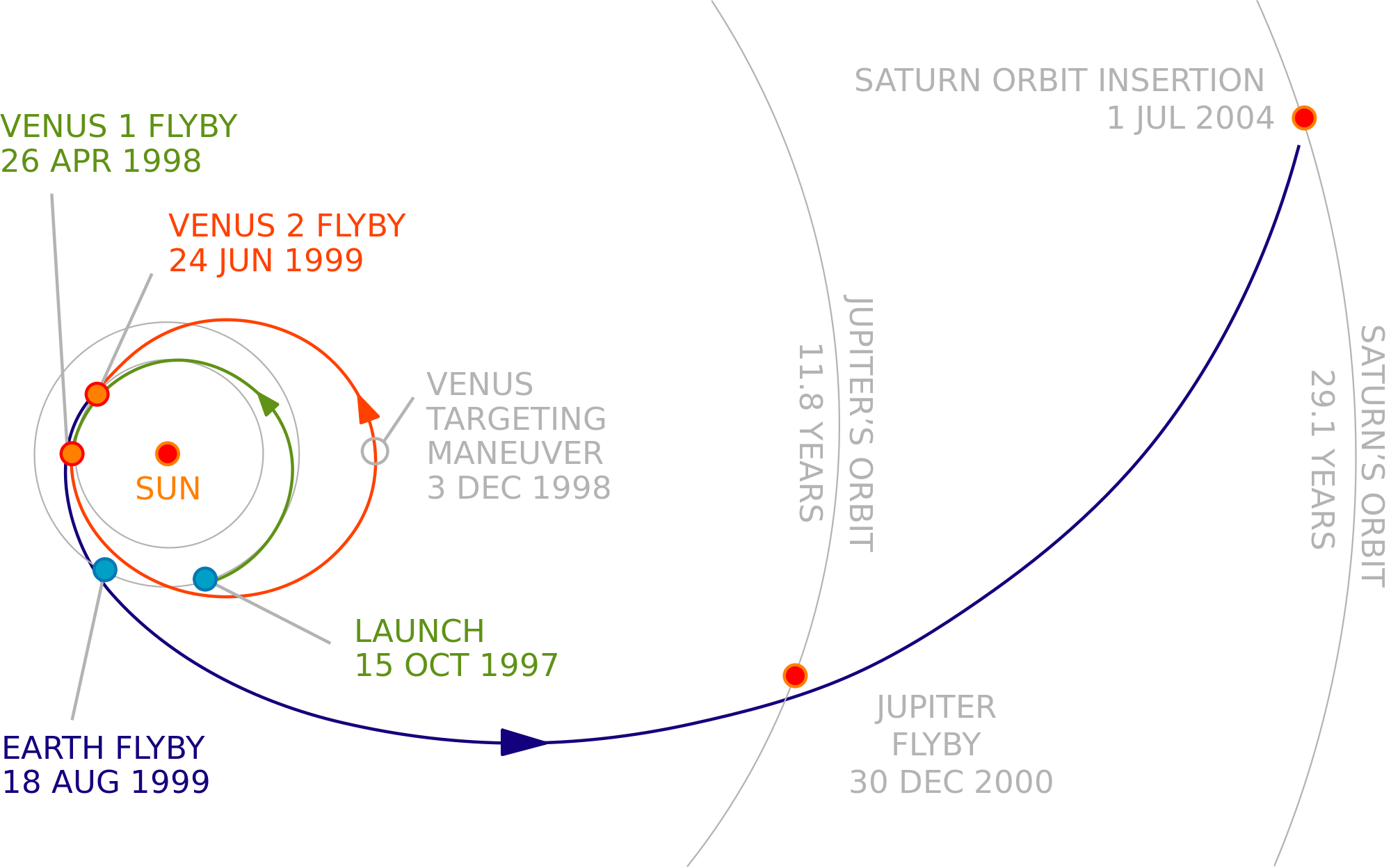Cassini Trajectory

| Credit | NASA / Jet Propulsion Laboratory - Caltech |
|---|---|
| Language |
|
This graphic depicts Cassini's interplanetary flight path beginning with launch from Earth on 15 October 1997, followed by gravity assist flybys of Venus (26 April 1998 and 21 June 1999), Earth (18 August 1999), and Jupiter (30 December 2000). Saturn arrival was on 1 July 2004.
The gravity-assist flybys of the different planets are designed to increase the spacecraft's velocity relative to the sun so it can reach Saturn. During these planetary flybys, there is an exchange of energy between the planet and the spacecraft which accelerates the latter and changes its velocity direction relative to the Sun.
With the use of the VVEJGA (Venus-Venus-Earth-Jupiter Gravity Assist) trajectory, it takes 6.7 years for the Cassini spacecraft to arrive at Saturn. The spacecraft must be designed to withstand the thermal environment both inside the orbit of Venus - about 266°F (130 °C) - and at Saturn, about -346°F (-210 °C).
